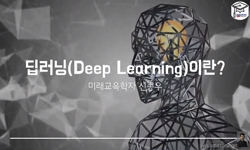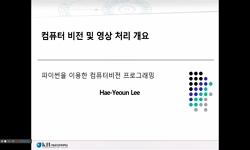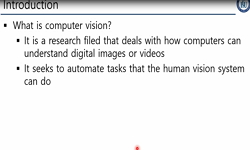최근에 해양에서는 선박 스스로 주변 상황을 인지하고 운항할 수 있는 자율운항 기술개발이 활발하게 이루어지고 있다. 이를 위해, 카메라를 통한 영상정보를 활용하여 인간의 시각 정보를 ...
http://chineseinput.net/에서 pinyin(병음)방식으로 중국어를 변환할 수 있습니다.
변환된 중국어를 복사하여 사용하시면 됩니다.
- 中文 을 입력하시려면 zhongwen을 입력하시고 space를누르시면됩니다.
- 北京 을 입력하시려면 beijing을 입력하시고 space를 누르시면 됩니다.
https://www.riss.kr/link?id=A107408385
- 저자
- 발행기관
- 학술지명
- 권호사항
-
발행연도
2019
-
작성언어
Korean
-
주제어
선박 분류 ; 딥러닝 ; 컴퓨터 비전 ; 영상처리 ; Ship classification ; Deep Learning ; Computer Vision ; Image Processing
-
등재정보
KCI등재
-
자료형태
학술저널
- 발행기관 URL
-
수록면
321-326(6쪽)
-
KCI 피인용횟수
0
- 제공처
- 소장기관
-
0
상세조회 -
0
다운로드
부가정보
국문 초록 (Abstract)
최근에 해양에서는 선박 스스로 주변 상황을 인지하고 운항할 수 있는 자율운항 기술개발이 활발하게 이루어지고 있다. 이를 위해, 카메라를 통한 영상정보를 활용하여 인간의 시각 정보를 대신할 수 있는 기술에 대한 중요성이 대두되고 있다. 카메라 영상을 기반으로 한 상황인지 기술을 위해서는 영상에서 존재하는 다양한 객체 정보를 분석하는 객체 분류 기술이 필수적이다. 본 논문에서는 해양 영상에서 관심 영역 추출과 합성곱 신경망을 활용하여 선박 분류 정확도를 향상시킬 수 있는 방법을 제안한다. 본 논문에서 제안된 방식의 성능을 검증하기 위해 공개 데이터 셋을 이용하여 기존의 합성곱 신경망 기반 방법과의 비교 실험을 수행하였으며, 실험을 통해 본 논문에서 제안된 방식이 선박 분류 정확도를 향상시킬 수 있음을 확인하였다. 제안된 방법을 활용하여 자율운항선박에서는 다른 해상 장비와의 센서 퓨전을 통하여 객체 데이터의 신뢰성을 확보할 수 있으며, 이를 통해 충돌 회피 및 안전한 운항이 가능할 것으로 기대된다.
다국어 초록 (Multilingual Abstract)
Recently, autonomous navigation technology has been actively developed in order to recognize and operate the vessel itself. For this purpose, importance is attached to technologies that can substitute human visual information by utilizing image inform...
Recently, autonomous navigation technology has been actively developed in order to recognize and operate the vessel itself. For this purpose, importance is attached to technologies that can substitute human visual information by utilizing image information through a camera. For the context recognition based on the camera image, object classification technology for analyzing various object information existing in the image is essential. In this paper, we propose a method to improve the accuracy of ship classification by using region of interest and artificial neural network. In order to verify the performance of the propose method in this paper, we performed a comparative experiment with the convolution artificial neural network based on the open data set. Experimental results show that the proposed method improves the accuracy of vessel classification. By using the proposed method, it is possible to secure the reliability of object data through sensor fusion with autonomous vessels, and it is expected that collision avoidance and safe operation will be possible.
목차 (Table of Contents)
- 요약
- Abstract
- 1. 서론
- 2. 데이터 구성 방법
- 3. 관심 영역 추출 방법
- 요약
- Abstract
- 1. 서론
- 2. 데이터 구성 방법
- 3. 관심 영역 추출 방법
- 4. 합성곱 신경망을 활용한 선박 분류
- 5. 실험 및 결과 비교
- 6. 결론 및 향후 연구
- References
참고문헌 (Reference)
1 C. Gabriella, "Visual categorization with bags of keypoints" 2004
2 Jaeyun Bae, "Vision-Based Ship Detection Using HOG and Fuzzy SVM" 25 (25): 2015
3 K. Simoyan, "Very Deep Convolutional Networks for Large-Scale Image Recognition"
4 Marti A. Hearst, "Support Vector Machines" 13 (13): 18-28, 1998
5 L. Maxime, "Ship Classification using Deep Learning Techniques for Maritime Target Tracking" 737-744, 2018
6 A. Okan, "Ship Classification Using an Image Data"
7 E. Gundogdu, "Marvel : A largescale image dataset for maritime vessels" 5 (5): 165-180, 2016
8 M. Oquab, "Learning and transferring mid-level image representations using convolutional neural networks" 1717-1724, 2014
9 C. Szegedy, "Inception-v4, Inception-ResNet and the Impact of Residual Connections on Learning" 4 : 12-, 2017
10 K. Alex, "ImageNet Classification with Deep Convolution Nerual Networks" 1 : 1097-1105, 2012
1 C. Gabriella, "Visual categorization with bags of keypoints" 2004
2 Jaeyun Bae, "Vision-Based Ship Detection Using HOG and Fuzzy SVM" 25 (25): 2015
3 K. Simoyan, "Very Deep Convolutional Networks for Large-Scale Image Recognition"
4 Marti A. Hearst, "Support Vector Machines" 13 (13): 18-28, 1998
5 L. Maxime, "Ship Classification using Deep Learning Techniques for Maritime Target Tracking" 737-744, 2018
6 A. Okan, "Ship Classification Using an Image Data"
7 E. Gundogdu, "Marvel : A largescale image dataset for maritime vessels" 5 (5): 165-180, 2016
8 M. Oquab, "Learning and transferring mid-level image representations using convolutional neural networks" 1717-1724, 2014
9 C. Szegedy, "Inception-v4, Inception-ResNet and the Impact of Residual Connections on Learning" 4 : 12-, 2017
10 K. Alex, "ImageNet Classification with Deep Convolution Nerual Networks" 1 : 1097-1105, 2012
11 C. Szegedy, "Going Deeper with Convolutions"
12 K. He, "Deep Residual Learning for Image Recognition"
13 A. Mikolajczyk, "Data augmentation for improving deep learning in image classification problem" 117-122, 2018
14 J. Canny, "A Computational Approach To Edge Detection" PAMI-8 (PAMI-8): 678-698, 1986
동일학술지(권/호) 다른 논문
-
- 한국지능시스템학회
- 권순학(Soon H. Kwon)
- 2019
- KCI등재
-
자율운항선박의 국제해상충돌예방규칙 준수를 위한 합성곱 신경망 기반의 선박 분류에 관한 연구
- 한국지능시스템학회
- 김민영(Min Yoeng Kim)
- 2019
- KCI등재
-
마이크로 유전알고리즘을 이용한 초단기예측시스템과 강수 실황모델의 결합을 통한 초단기 강수예측성능 개선
- 한국지능시스템학회
- 장지연(Jiyeon Jang)
- 2019
- KCI등재
-
- 한국지능시스템학회
- 김병호(Byoung-Ho Kim)
- 2019
- KCI등재
분석정보
인용정보 인용지수 설명보기
학술지 이력
| 연월일 | 이력구분 | 이력상세 | 등재구분 |
|---|---|---|---|
| 2023 | 평가예정 | 재인증평가 신청대상 (재인증) | |
| 2020-01-01 | 평가 | 등재학술지 선정 (재인증) |  |
| 2019-12-01 | 평가 | 등재후보로 하락 (계속평가) |  |
| 2016-01-01 | 평가 | 등재학술지 선정 (계속평가) |  |
| 2015-12-01 | 평가 | 등재후보로 하락 (기타) |  |
| 2011-01-01 | 평가 | 등재학술지 유지 (등재유지) |  |
| 2009-01-01 | 평가 | 등재학술지 유지 (등재유지) |  |
| 2008-02-20 | 학술지명변경 | 한글명 : 한국퍼지및지능시스템학회 논문지 -> 한국지능시스템학회 논문지외국어명 : 미등록 -> Journal of Korean Institute of Intelligent Systems |  |
| 2008-02-18 | 학회명변경 | 한글명 : 한국퍼지및지능시스템학회 -> 한국지능시스템학회영문명 : Korea Fuzzy Logic And Intelligent Systems Society -> Korean Institute of Intelligent Systems |  |
| 2007-01-01 | 평가 | 등재학술지 유지 (등재유지) |  |
| 2005-01-01 | 평가 | 등재학술지 유지 (등재유지) |  |
| 2002-01-01 | 평가 | 등재학술지 선정 (등재후보2차) |  |
| 1999-07-01 | 평가 | 등재후보학술지 선정 (신규평가) |  |
학술지 인용정보
| 기준연도 | WOS-KCI 통합IF(2년) | KCIF(2년) | KCIF(3년) |
|---|---|---|---|
| 2016 | 0.62 | 0.62 | 0.63 |
| KCIF(4년) | KCIF(5년) | 중심성지수(3년) | 즉시성지수 |
| 0.56 | 0.49 | 0.866 | 0.2 |




 DBpia
DBpia







